
Tran Quoc PagodaThe original pagoda was built in the 6th century and is considered the oldest in Vietnam. It was founded on the bank of the Red River by King Ly Nam De who named it Khai Quoc (National Founder). Much later, it was moved to its present site beside Hanoi’s Ho Tay (West) Lake during the reign of King Le Kinh Tong (1600-1618) and renamed Tran Quoc (National Defence). The current building is the result of major renovations in 1815, but one of its effigies dates back to the early 17th century.
In the garden, there is a Pipal Tree (ficus religiosa, but known throughout history as the Bodhi tree) reputedly grown from a cutting of the original tree where Buddha sat and gained enlightenment.
Hoe Nhai PagodaThis pagoda was founded in 1020 by a Chinese Buddhist monk named Trong Dien. The ruling monarch at that time had persecuted Buddhist monks. Dien described the Buddhist philosophy for him, and he relented.
Inside, a statue of Dien shows him sitting on the Kings back, symbolising the understanding between them. The interior framework of the building and the altars are all fashioned in hardwood and are very attractive.
One Pillar PagodaOne Pillar Pagoda.Close to what is now the Ho Chi Minh Museum, the One Pillar (or One Tree) Pagoda overlooks a small pond. It was built by Emperor Ly Thai Tong after a dream in which the Goddess of Mercy handed him a male child on a lotus flower. He created the small wooden pagoda to resemble a lotus blossom to commemorate the birth of his long-awaited heir.
Unfortunately, the original was destroyed during the war with the French. The present building is a replica erected the year after the colonists were finally expelled in 1954.
Lien Phai PagodaThis pastel coloured multi-tiered pagoda stands in a pleasant garden hidden in a labyrinth of alleys leading off Bach Mai Street just below the city centre to the south. It is set amongst pleasant and tranquil gardens next to the main building of worship. The pagoda was founded by one of the Nguyen Lords in the early 18th century who picked up a rock resembling a lotus root in his back garden. Considering this a sign from Buddha, he converted his palace into the pagoda.
A visit also provides an opportunity to venture into the maze of tiny alleys off the main roads where the majority of Hanoi’s residents live, and where foreigners are a great rarity.
Quan Thanh PagodaThis impressive pagoda was founded during the reign of King Ly Thai To (1010-1028), and is located beside Truc Bach Lake. It is ornately decorated and stands before a pleasant courtyard shaded by banyan trees. Inside, there is an imposing four-ton bronze statue of the God of the North cast in 1677, together with his attendant spirits, a snake and a tortoise – clearly a Taoist symbol.
Tay Ho Pagoda
Named after the lake it sits beside, the pagoda occupies a superb position on a tongue of land projecting into the water. It is dedicated to Thanh Mau, the Mother Goddess, who appeared on the lake as a pretty girl, smiling and reciting poetry to a fisherman, then vanished.
It is one of Hanoi's most popular pagodas, attracting many worshippers on the first and 15th of each lunar month. It’s also a delightful place to visit, particularly as part of a trip around the lake by boat – it has its own landing stage.
Lang Pagoda
Located in Hanoi’s suburbs, the Lang Pagoda provides an opportunity to see a semi-rural area, yet another of Hanoi’s many faces. It was built during the reign of Emperor Ly Than Tong (1128-1138). Entry is via an ancient concrete and wooden gateway flanked by stone elephants. The courtyard encloses an octagonal pavilion. For visitors, it offers a peaceful setting where local students like to read and paint, and old people enjoy relaxing in the shade of the trees.
In the garden, there is a Pipal Tree (ficus religiosa, but known throughout history as the Bodhi tree) reputedly grown from a cutting of the original tree where Buddha sat and gained enlightenment.
Hoe Nhai PagodaThis pagoda was founded in 1020 by a Chinese Buddhist monk named Trong Dien. The ruling monarch at that time had persecuted Buddhist monks. Dien described the Buddhist philosophy for him, and he relented.
Inside, a statue of Dien shows him sitting on the Kings back, symbolising the understanding between them. The interior framework of the building and the altars are all fashioned in hardwood and are very attractive.
One Pillar PagodaOne Pillar Pagoda.Close to what is now the Ho Chi Minh Museum, the One Pillar (or One Tree) Pagoda overlooks a small pond. It was built by Emperor Ly Thai Tong after a dream in which the Goddess of Mercy handed him a male child on a lotus flower. He created the small wooden pagoda to resemble a lotus blossom to commemorate the birth of his long-awaited heir.
Unfortunately, the original was destroyed during the war with the French. The present building is a replica erected the year after the colonists were finally expelled in 1954.
Lien Phai PagodaThis pastel coloured multi-tiered pagoda stands in a pleasant garden hidden in a labyrinth of alleys leading off Bach Mai Street just below the city centre to the south. It is set amongst pleasant and tranquil gardens next to the main building of worship. The pagoda was founded by one of the Nguyen Lords in the early 18th century who picked up a rock resembling a lotus root in his back garden. Considering this a sign from Buddha, he converted his palace into the pagoda.
A visit also provides an opportunity to venture into the maze of tiny alleys off the main roads where the majority of Hanoi’s residents live, and where foreigners are a great rarity.
Quan Thanh PagodaThis impressive pagoda was founded during the reign of King Ly Thai To (1010-1028), and is located beside Truc Bach Lake. It is ornately decorated and stands before a pleasant courtyard shaded by banyan trees. Inside, there is an imposing four-ton bronze statue of the God of the North cast in 1677, together with his attendant spirits, a snake and a tortoise – clearly a Taoist symbol.
Tay Ho Pagoda
Named after the lake it sits beside, the pagoda occupies a superb position on a tongue of land projecting into the water. It is dedicated to Thanh Mau, the Mother Goddess, who appeared on the lake as a pretty girl, smiling and reciting poetry to a fisherman, then vanished.
It is one of Hanoi's most popular pagodas, attracting many worshippers on the first and 15th of each lunar month. It’s also a delightful place to visit, particularly as part of a trip around the lake by boat – it has its own landing stage.
Lang Pagoda
Located in Hanoi’s suburbs, the Lang Pagoda provides an opportunity to see a semi-rural area, yet another of Hanoi’s many faces. It was built during the reign of Emperor Ly Than Tong (1128-1138). Entry is via an ancient concrete and wooden gateway flanked by stone elephants. The courtyard encloses an octagonal pavilion. For visitors, it offers a peaceful setting where local students like to read and paint, and old people enjoy relaxing in the shade of the trees.
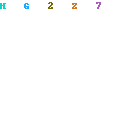

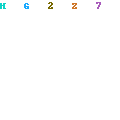

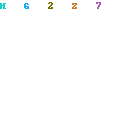
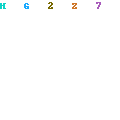
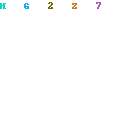
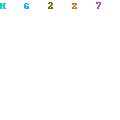
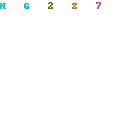













tour du lịch nước ngoài